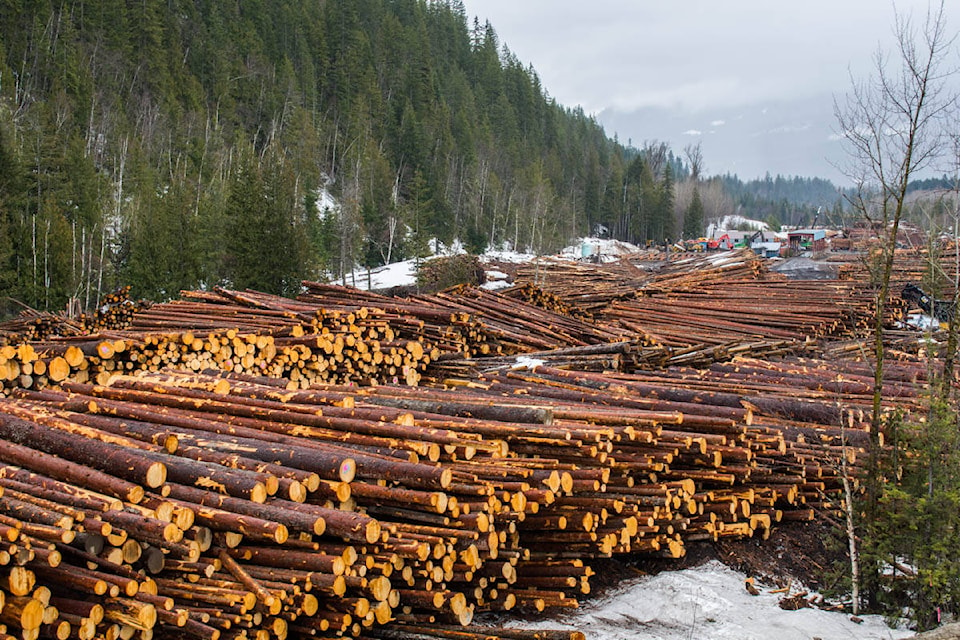As pointed out in the engage discussion paper for the Interior Forest Sector Review there are over a dozen forms of tenure, most focused on timber harvesting but also associated activities like road building, each with their own specific administrative requirements.
In general terms, forest tenure is the right to access fibre, and often sought out to secure investment, provide operating certainty through fibre flow and community benefits through employment, taxation and in some cases, revenue-sharing.
One of the questions asked in the discussion paper was: “With the declining harvest levels and fully allocated AACs (allowable annual cut) what approach should government take to diversifying tenure?”
As shown in the document the majority of logs are harvested by a few large companies through volume-based replaceable forest licences.
As described above the large forest companies used these licences to help secure investments for the mill construction and provide a certainty of fibre flow.
The profits from these licences not only built the mills but allowed for upgrades that produced more lumber with less people and any extra profits allowed purchases of mills outside of the province.
In my opinion all log volume associated with recent mill closures should be returned to the Crown to make up for anticipated deficits in the AAC.
Read more: 21 Northern B.C. mayors urge Ottawa to help struggling forest industry
Any future forest licences should have more flexibility with at least some review periods to allow both sides to make changes. For example the forest licence should have a time frame related to the pay off period of the investment costs (usually about 15-plus years).
After that the licences should revert to the Crown so it could be issued for the encouragement of a type of facility that is needed to use another part of the forest biomass profile.
This would mean we would move toward more lumber processors buying logs from the open market which would put us in a better negotiating position on the softwood lumber deal with the U.S.
There should also be more area-based tenures like community forests with the allowable annual cut calculated relative to the population of the community.
In the case of the Williams Lake Community Forest (WLCF) it should be at least doubled from the current 40,000 cubic metres to accommodate forest protection plans around the city and surrounding communities.
READ MORE: Community forests have many advantages for rural communities
I calculated the log profit from the WLCF was about $10 per cubic metre based on the two million dollars in dividends returned to the two share holders from the last cut control period ending in 2018.
In addition to more profits staying in the community the forest management on the community forest has been more focused on beetle salvage, improving fire preparedness and trying to deal with the utilization of residual material following logging as well as getting the most profit from the logs. As a member of the select standing committee for the WLCF we have also been involved with funding scholarships and a variety of community projects submitted by a wide cross section of individuals and groups in the immediate community.
Areas based tenures also need some flexibility to take into account the more limiting features of the smaller remote communities where they will be a critical factor in getting logs and residual material to local manufacturing facilities or the more remote centralized mills.
Jim Hilton is a professional agrologist and forester who has lived and worked in the Cariboo Chilcotin for the past 40 years. Now retired, Hilton still volunteers his skills with local community forests organizations.
